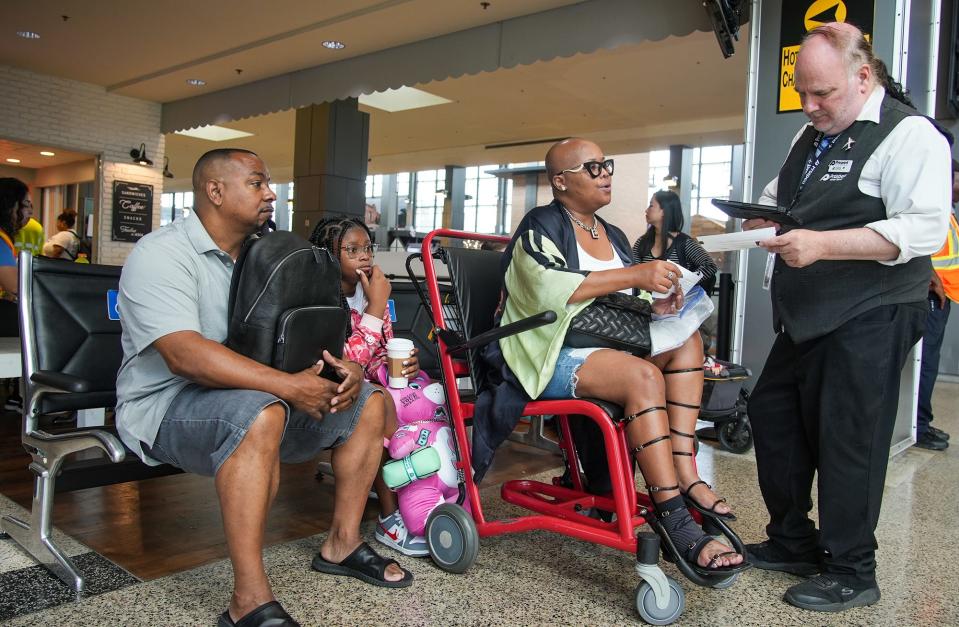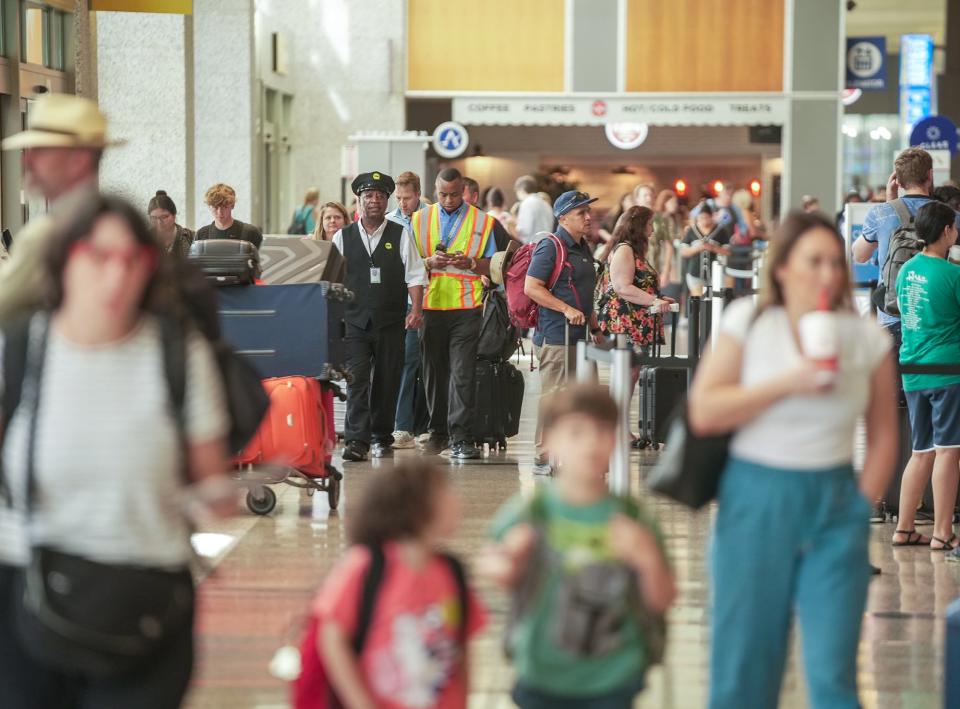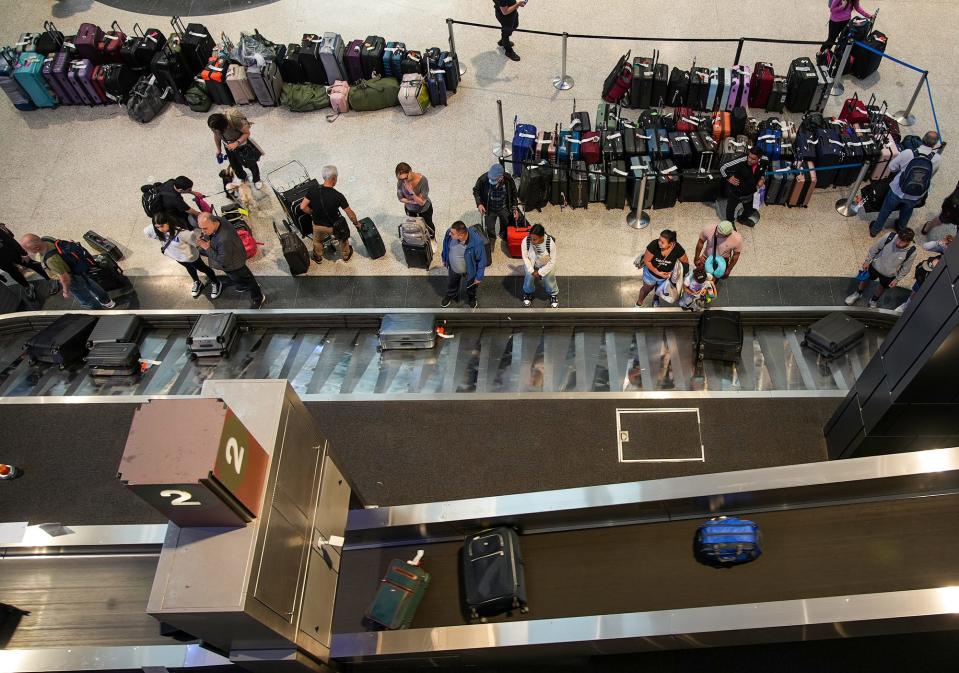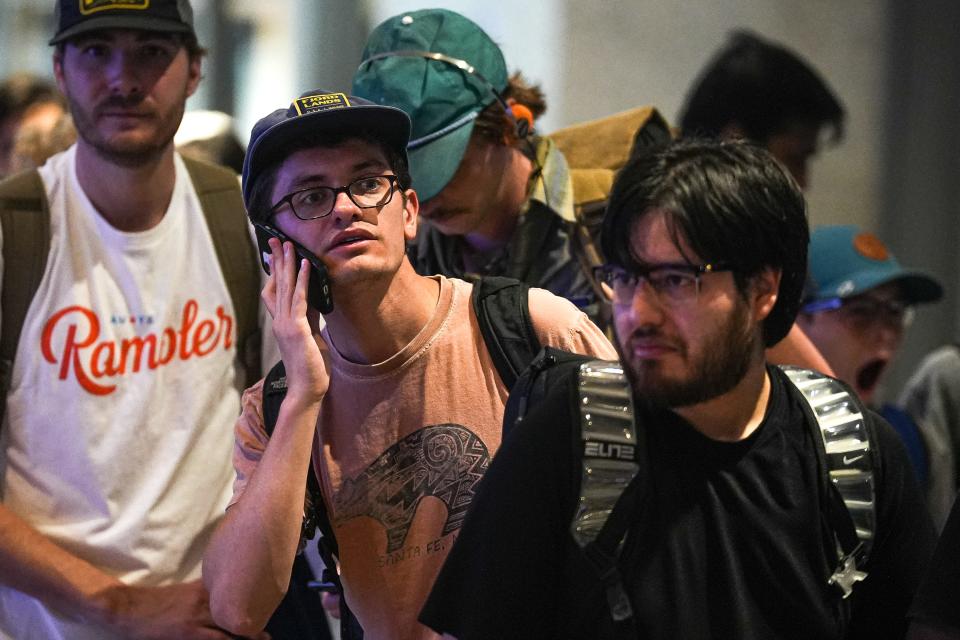Austin airport expects a record-breaking summer. Here's how it prepared.
Officials at Austin-Bergstrom International Airport are buckling in for a busy summer, which they project will see the largest passenger crowds since the COVID-19 pandemic brought most U.S. airfields to a standstill.
Aware of the coming wave, the different entities that make air travel possible — the airport, airlines, the Transportation Safety Administration and others — have been preparing.
Joel Martinez, a Baylor University adjunct lecturer teaching aviation administration and the 15-year director of the Waco Regional Airport, said summer is often the busiest time of year, in part because all kinds of people travel during the summer months, including people who would not be considered frequent flyers.

"From August or September through late May, for the most part, it's business or corporate travelers (and) very intentional vacation travelers," Martinez told the American-Statesman. "In the summertime, it's kind of a free-for-all. It's everybody. It's grandma. It's babies in strollers. The whole gamut."
His comments come as Austin-Bergstrom had its second-busiest day ever June 30, when officials say more than 37,000 passengers departed ahead of the Independence Day holiday. That Friday topped the previous record for the second-busiest day: the Friday before South by Southwest in March, which saw more than 36,800 departing travelers.
‼️NEW passenger volume record broken: Yesterday saw 37,192 departing passengers, breaking a new record for second-busiest day ever at AUS.
Our previous second busiest day record was this year’s Friday before SXSW with 36,841 departing travelers. pic.twitter.com/n2fRHhXwsk— Austin-Bergstrom International Airport (AUS) (@AUStinAirport) July 1, 2023
The all-time highest record by month was set last year in May, just before the official start of summer. Then, more than 2 million passengers used Austin-Bergstrom, according to the latest aviation report. Sam Haynes, the airport's communications and marketing manager, said she expects the airport could break that record sometime this summer.
"Spring 2021 was right when it started to get record-breaking busy, and it's just sustained that way," Haynes told the Statesman.
The busy summer comes at a time when long lines and flight delays have plagued the airport. Austin-Bergstrom's leadership has said a number of upcoming projects, for which the airport sought public input, should address those issues.
"We are expanding and improving the airport, and we know that there are pressure points," Haynes said "We are working very hard to relieve those, not just as soon as we can, but to set ourselves up for long-term success so that in 10, 15 and 20 years, we're not feeling the congestion that we feel today."
Preparation by airport, airlines
Haynes said preparations by the airport for the summer are wide-reaching, including tweaks to operations and allowing space for overflow parking in certain areas when needed.

While the preparations could help reduce wait times, Haynes acknowledged that the airport will still be busy. A testament to that is the airport's official recommendation that passengers departing from Austin for domestic flights arrive 2½ hours ahead of their boarding time — 30 minutes more than the TSA's general recommendation of two hours.
"We encourage folks to kind of think of that as insurance," Haynes said. "You hope you don't need it, but there are so many things that can happen that can cause lines that can cause delays."
Staffing at the airport is also a focus. More than 100 employers operate to some degree at the airport, and their work contributes to moving people through and onto their destinations. The city's aviation department alone employed nearly 460 employees as of May 30, according to records reviewed by the Statesman. As a result, the airport is almost always hiring at some level, Haynes said.

Likewise, airlines often review their staffing and schedules ahead of the summer, ensuring they are prepared, Martinez said.
What about the TSA?

Another element of airline travel is getting through the TSA's security checkpoints.
The COVID-19 pandemic resulted in staffing shortages for TSA officials. However, the federal agency has achieved sufficient staffing levels to accommodate what is expected to be a busy summer, in part because of recent changes to the compensation and benefits for employees, said Patricia Mancha, a spokesperson for TSA’s Southwest division, which encompasses Texas, Oklahoma, New Mexico, Arizona, Arkansas, Kansas and Nebraska.
As of July 1, TSA officers who remain employed for one year will receive an annual salary raise to $46,245, and they'll get another raise to $57,117 two years after their hire date. That represents a nearly $10,000 increase in pay, which the TSA hopes will attract and retain a skilled workforce, Mancha said.
In May 2022, the wages for TSA security screeners started as low as $38,540 and $42,600 for those in the bottom 10th and 25th percentile, respectively, according to the latest figures from the U.S. Bureau of Labor Statistics.
The increase is possible because of funding in the fiscal 2023 omnibus appropriations bill for TSA to bring salaries in line with much of the federal workforce. Funding was allocated as well for the installation of new technology that will “significantly enhance” checkpoint screening capabilities, according to a TSA news release announcing the signing of the bill by President Joe Biden in December.
Mancha said that new technology — specifically computed tomography, a type of X-ray scanning equipment typically used in medical and research fields — will be installed at every checkpoint at the Austin airport. Once operational, the new security measures will eliminate the need for passengers to remove electronics, aerosols, liquids and other items from their carry-on luggage to be individually inspected.But those systems, which could expedite the check-in process, won't be operating until after the summer rush, in September or October, Mancha said.
This article originally appeared on Austin American-Statesman: Austin-Bergstrom International Airport preparing for record travel

